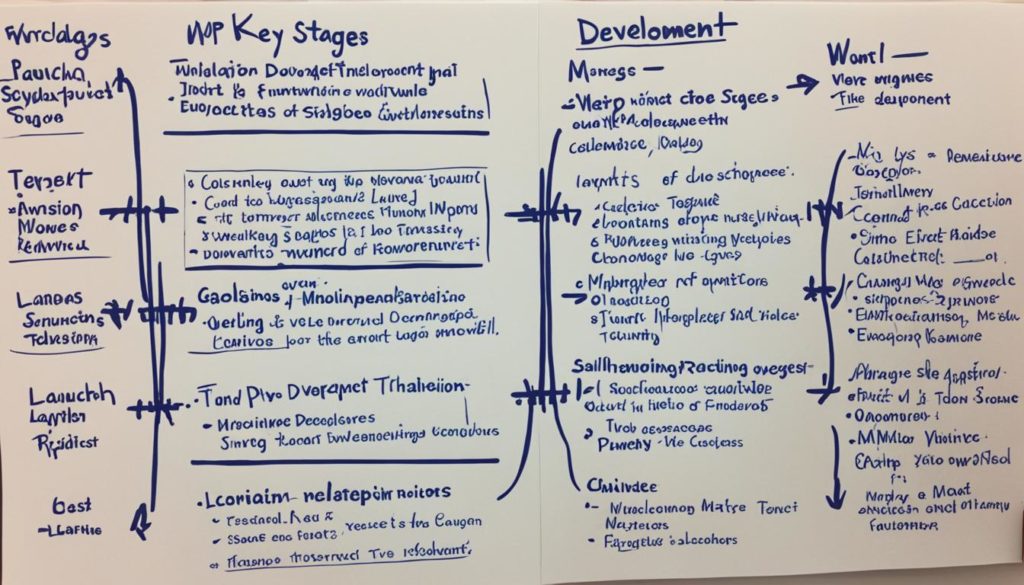
Did you know cloud computing can launch a test server in under 30 minutes? And set up a full development environment in only hours? For leaders in the modern business world, this fact is more than technical—it’s a game changer. The path known as Executive Cloud Strategy allows leaders to use the vast benefits of cloud services. By using Executive Cloud Computing, C-suite pros are making their organizations more agile and efficient.
Now, the cloud’s influence is changing the role of top executives too. The Chief Information Officer (CIO), for example, is moving from IT-focused to being a strategic business leader. Driving application productivity is becoming more important than dealing with infrastructure issues. CEOs and CFOs are getting more involved in cloud decisions, not just to cut IT costs but also to use technology as a key competitive edge. In this new era, C-Suite Cloud Computing is about visionary leadership as much as it is about technology. This leadership drives growth and sets companies apart.
Key Takeaways
-
- Rapid deployment and scalability of cloud services enhance business agility.
- Executive cloud strategies are essential for ROI optimization and product strategy development.
- Cloud adoption is shifting focus towards core business differentiators and away from physical IT asset management.
Leadership roles are evolving to place greater emphasis on leveraging technology for competitive advantage.
-
- Sales and marketing departments must adapt to new cloud service models and customer retention strategies.
- Cloud computing’s impact on HR highlights the need for policies conducive to a mobile and global workforce.
Embracing Cloud Services for Executive Advantage
Executive Cloud Solutions are key for businesses wanting to improve work processes and be more competitive. Executive Cloud Migration and Cloud Adoption for Executives help leaders use cloud services well.
Cloud services let executives explore and use different types of services, like IaaS and SaaS. According to 92% of CIOs, the cloud helps their businesses a lot.
Cloud services are also cheaper, making them very appealing. Over two-thirds of executives find them more budget-friendly than traditional IT. This cost-saving feature makes Executive Cloud Solutions popular among business leaders.
| Department | Percentage (%) |
|---|---|
| IT | 67 |
| Sales | 36 |
| Customer Support | 35 |
SaaS models give people more control over applications. 62% of CIOs support this. This change is seen in IT, sales, and customer support. It shows cloud services are becoming vital in business.
The cloud market is growing fast. From a value of $78 billion in 2011, it’s expected to reach $235.4 billion by 2017. This info comes from IHS Technology. The growth shows how important Executive Cloud Migration is for both consumers and businesses.
In the end, using Executive Quirm Solutions is crucial. It’s not just about technology, but also strategy. Cloud Adoption for Executives prepares leaders for success in a digital world.
Strategizing Executive Cloud Migration for Business Growth
Organizations are turning to cloud solutions more than ever. The role of executives is critical in leading these efforts. Our strategy for Executive Cloud Migration focuses on using technology to support business goals. This drives growth and sparks innovation.
The Value Proposition of Executive Cloud Solutions
Creating an Executive Cloud Strategy means looking at the full range of cloud benefits. Benefits include better agility, cost savings, more scalability, and improved disaster recovery. With Cloud Services Management, execs can get the most from their cloud investments. They make sure resources are used well and wisely.
Navigating the Challenges of Cloud Adoption for Executives
But, moving to the cloud can be tough. Executives face challenges like managing cultural changes, aligning tech with goals, and security worries. Leaders must be thoughtful and proactive to overcome these challenges.
We’re committed to helping executives master Executive Cloud Migration. The table below shows key strategies:
| Challenge | Strategy | Outcome | |
|---|---|---|---|
| Cultural Adaptation | Organizational change management and training programs | Enhanced agility and faster adoption of new technologies | |
| Business Alignment | Strategic planning sessions that tie cloud technology with business goals | Greater operational efficiency and goal achievement | |
| Security and Compliance | Implementation of robust governance frameworks | Reduced risks and improved compliance with regulations |
Dealing with these issues directly will not just lower risks but ease cloud migration. Remember, moving to the cloud is more than a tech shift. It’s a key part of strategic growth.
Executive Cloud Computing: Unlocking Organizational Efficiency
The world of cloud computing leadership is always changing. Executives need to find effective executive cloud strategies now more than ever. The rising number of cloud providers shows how complex and promising the cloud world is. It meets different needs of organizations and drives strategic progress.
Organizations sometimes just move their apps to the cloud without making them better. This can cause inefficiencies and lost chances to fully use the cloud. It’s crucial for leaders to aim for a transformational executive cloud migration, not just a simple move.
Whether to stick with one cloud vendor or use many depends on how mature a company’s digital plan is. Leaders play a key role in this choice. They ensure it matches the company’s big goals and tech capabilities.
New CIOs should focus on excellence in CloudOps and FinOps. This means making sure cloud projects deliver the value stakeholders expect and help increase profits. Wanting to continuously get better and operate smartly shows why a dynamic executive cloud strategy is needed.
| Strategy Type | Focus at Area |
|---|---|
| CloudOps | Operational Management |
| FinOps | Financial Optimization |
| Transformational Leadership | Executive Cloud Strategy |
Improving operations in cloud computing goes beyond just new tech. It’s about making cloud computing leadership a core part of business planning. This leads to better growth, more innovation, and a team ready for the future’s digital challenges.
Architecting a Future-Proof Executive Cloud Strategy
Today, we as business leaders aim for lasting success and relevance. This requires us to develop an executive cloud strategy. It should meet today’s needs and foresee tomorrow’s industry demands. We start this journey by creating a flexible cloud services management plan. This plan supports major platforms like AWS and Azure. By doing this, we access a wide range of cloud capabilities. These include Virtual Machines (VMs), Storage solutions, and advanced Platform as a Service (PaaS) options. Our approach ensures our cloud solutions are both smart and adaptable.
Building an Agile Cloud Services Management Framework
To lead in innovation, we must refine our cloud management constantly. It involves being agile in adding managed services and exploring public cloud options. Adopting this mindset brings flexibility. It also keeps our cloud solutions up-to-date with new trends and technologies. By staying agile, we can quickly respond to market changes. This lets us seize growth and improvement opportunities effectively.
Creating a Robust Executive Cloud Governance Model
A strong executive cloud governance model is essential. It supports our cloud projects, ensures compliance, and boosts security. At the same time, it aligns with our main business goals. This balance helps us use cloud resources well without losing their benefits. A solid governance framework means our cloud activities reflect our company’s values. Thus, we deliver value in every aspect of our business.
Architecting a Future-Proof Executive Cloud Strategy
What are the primary benefits of Executive Cloud Computing for business leaders?
Executive Cloud Computing helps optimize strategic frameworks for better ROI. It also improves product strategy and picks the right cloud solutions. This technology gives leaders deeper insights into deployment models and service types. It promotes innovation and increases operational efficiency in the company.
How does implementing Cloud Services for Executives impact a company’s competitive edge?
By using advanced cloud services, executives can better understand deployment methods and cloud services. This understanding boosts the company’s competitive edge. It provides tools for leaders to make smart decisions that fit the company’s goals. It also helps them adjust to market changes quickly.
What role does the C-Suite play in Cloud Computing adoption?
The C-Suite is key to adopting cloud computing in a company. They define and lead the executive cloud strategy. Their goal is to make sure it matches the company’s main objectives. They also guide the cultural move towards cloud usage, handling related risks and governance.
Why is Executive Cloud Migration critical for business executives?
Executive Cloud Migration is crucial because it uses new technologies to grow and become more agile. Executives need to ensure migration matches the company’s goals. It leads to innovation and future growth by moving to efficient cloud options.
What is the importance of Cloud Adoption for Executives in the current business landscape?
Cloud Adoption is vital for executives today as it brings scalability, flexibility, and cost benefits. It keeps executives ahead in technology, ensures business keeps running, and manages resources well. This meets the changing demands of the market.
What is the Value Proposition of Executive Cloud Solutions?
Executive Cloud Solutions transform business by boosting efficiency, innovation, and agility. They improve teamwork, allow data-driven decisions, and quick market adjustment. This leads to better business growth overall.
How can leaders effectively Navigate the Challenges of Cloud Adoption for Executives?
Leaders can overcome cloud adoption hurdles by syncing the cloud plan with company goals. They must manage the shift in company culture and fix security and compliance issues early. Success demands thorough training, clear messaging, and strong security rules.
Can you describe the relationship between Cloud Computing Leadership and company performance?
Good Cloud Computing Leadership boosts a company’s performance. It drives innovation and better workflows. It also helps the company react swiftly to the market’s demands. Good leadership means teams clearly understand cloud use, improving the use of resources and tech investments.
How does Executive Cloud Strategy contribute to enterprise sustainability?
An Executive Cloud Strategy helps build a lasting tech structure for both current and future business challenges. Leaders must continuously review tech trends, customer needs, and the market. This ensures the company’s systems are strong, can grow, and stay secure.
Why is it critical to build an Agile Cloud Services Management Framework?
Creating an agile Cloud Services Management Framework is essential for quick adjustments to change. It improves cloud service management and takes full advantage of cloud resources. Agility lets cloud strategies grow with the ever-changing digital world and business needs.
What constitutes a Robust Executive Cloud Governance Model?
A strong Executive Cloud Governance Model has clear rules for using cloud services safely and in compliance. It aims to effectively manage cloud costs and risks. It includes strict enforcement, ongoing monitoring, and optimizes the use of cloud resources.
Future App Studios is an award-winning software development & outsourcing company. Our team of experts is ready to craft the solution your company needs.










